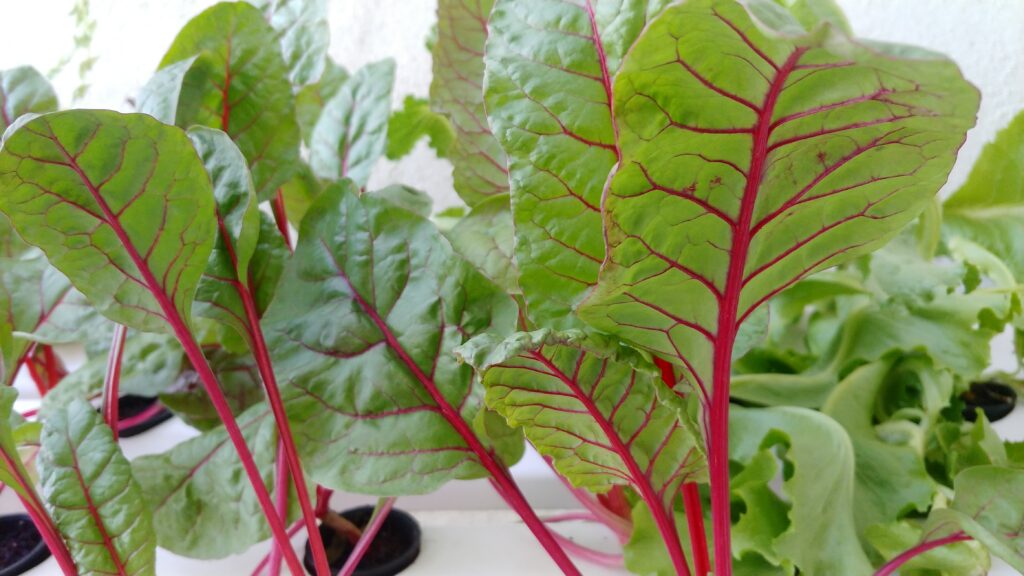If you’ve ever wondered about the downside of hydroponics, you’re not alone. Curiosity has led many to question the potential drawbacks of this innovative gardening method. Hydroponics, known for its ability to grow plants without soil, offers numerous advantages, but it’s important to explore the other side of the equation. In this article, we’ll uncover the disadvantages of hydroponics, shedding light on the potential challenges that come along with this alternative way of growing plants. So, if you’re ready to uncover the lesser-known aspects of hydroponics, let’s dive right in!
1. Limited plant selection
Hydroponics, while an innovative and efficient method of growing plants, does have its disadvantages. One major drawback is the limited plant selection it offers. Some crops may not thrive in a hydroponic system, which can restrict the variety of plants that can be grown. Certain plants, such as root vegetables or those with extensive root systems, may not be well-suited for this type of cultivation. Additionally, plants that require specific environmental conditions, such as high humidity or low light levels, may be challenging to grow in a hydroponic setup.
1.1 Limited variety of crops
In a traditional soil-based garden, you have the flexibility to grow a wide range of crops. You can cultivate fruits, vegetables, herbs, and even ornamental plants. However, hydroponics may not provide the same level of flexibility when it comes to plant selection. Some plants may simply not thrive in a hydroponic environment, which can limit the variety of crops you can grow. If having a diverse array of plant options is important to you, it’s essential to research and understand the compatibility of different plants with hydroponic systems.
1.2 Compatibility with certain plants
Hydroponics relies on a nutrient solution to provide plants with the necessary minerals and nutrients for growth. While many plants can thrive in this type of system, some may not be compatible due to their specific nutrient requirements. Certain plants may have specialized needs that are more difficult to meet in hydroponics. For example, some plants may require a higher pH level or specific nutrient ratios, which can be challenging to control in a hydroponic setup. It’s important to carefully consider the compatibility of plants with a hydroponic system before selecting what to grow.
2. Cost
Another disadvantage of hydroponics is the associated cost. While it can be a cost-effective long-term investment, the initial setup costs can be quite high. Setting up a hydroponic system requires purchasing various equipment and supplies, including grow lights, pumps, reservoirs, and nutrient solutions. These upfront costs can be a barrier for individuals who are on a tight budget or starting with limited resources.
2.1 High initial setup costs
The initial setup costs of a hydroponic system can be substantial, especially if you are starting from scratch. Purchasing all the necessary equipment, such as grow lights, containers, pumps, and irrigation systems, can quickly add up. Additionally, depending on the scale of your hydroponic operation, you may need to invest in a dedicated space or construct a greenhouse, further increasing the overall cost. It’s crucial to carefully consider your budget and weigh the initial setup costs before venturing into hydroponics.
2.2 Continuous expenses
Beyond the initial setup costs, hydroponics also entails ongoing expenses. Nutrient solutions need to be regularly replenished, and electricity is required to power the pumps, lights, and other equipment. These continuous expenses can accumulate over time, particularly if you have a large-scale hydroponic system or are growing a significant number of plants. It’s important to factor in these ongoing costs and ensure they align with your financial capabilities.
2.3 Cost of specialized equipment
Hydroponic systems often require specialized equipment that may not be readily available or affordable. For example, high-quality grow lights capable of providing the necessary light spectrum for plant growth can be expensive. Additionally, monitoring and control systems to regulate environmental factors such as temperature, humidity, and pH levels may require specialized equipment. The cost of such equipment can be a significant drawback, particularly for individuals or small-scale growers with limited financial resources.

3. Technical expertise and maintenance
Hydroponics requires a certain level of technical knowledge and ongoing maintenance to ensure optimal plant growth. This need for expertise and regular monitoring can be challenging for individuals who are new to hydroponic gardening or lack the necessary skills.
3.1 Requires technical knowledge
To successfully implement and manage a hydroponic system, a certain level of technical knowledge is required. Understanding the principles of hydroponics, such as nutrient solutions, pH levels, and plant needs, is essential for achieving optimal results. Additionally, troubleshooting issues that may arise, such as nutrient deficiencies or system malfunctions, requires a deep understanding of the underlying principles of hydroponics. It’s crucial to educate yourself and acquire the necessary knowledge or seek guidance from experienced hydroponic growers.
3.2 Regular monitoring and adjustments
Unlike traditional soil-based gardening, hydroponics demands regular monitoring and adjustments. Parameters like pH levels, nutrient concentrations, and water levels need to be closely monitored to ensure the well-being of plants. If any imbalances or deviations occur, immediate adjustments must be made to prevent negative impacts on plant health. This ongoing monitoring and adjustment process can be time-consuming and may require daily attention, particularly in larger-scale hydroponic systems. It’s important to be prepared for the regular maintenance and monitoring required in hydroponics.
3.3 Dependency on technology
Hydroponic systems heavily rely on technology and various equipment to create and maintain an optimal growing environment. From pumps and grow lights to sensors and controllers, the operation of a hydroponic system depends on these technological components. While advancements in technology have made hydroponics more accessible, it also means that any malfunction or failure in the technology can disrupt the entire system. The reliance on technology may require backup systems or redundancy measures to minimize the risk of system failures.
3.4 Risk of system failures
As with any complex system, there is always the risk of system failures in hydroponics. Equipment malfunctions, power outages, or mistakes in the nutrient solution formulation can lead to adverse effects on plant health. If a system failure occurs, it can result in poor growth, nutrient imbalances, or even plant death. The risk of system failures underscores the importance of regular maintenance, monitoring, and having contingency plans in place to minimize the potential impact of such failures.
4. Power and energy requirements
Hydroponics requires a significant amount of power and energy to operate the necessary equipment for plant growth. This heavy reliance on electricity can lead to increased energy consumption and vulnerability to power outages.
4.1 High energy consumption
The operation of hydroponic systems involves various electrical components, such as pumps, grow lights, and ventilation systems. These components require a continuous supply of electricity to function properly. Consequently, hydroponics can be associated with high energy consumption. The increased energy demand can result in higher electricity bills, particularly for growers with larger systems or those using energy-intensive equipment. It’s important to consider the potential energy costs associated with hydroponics and evaluate the feasibility based on your energy budget.
4.2 Reliance on electricity
Hydroponics heavily relies on a stable and uninterrupted supply of electricity. Without electricity, pumps would not circulate the nutrient solution, grow lights would not provide the necessary illumination, and other essential operations would come to a halt. This reliance on electricity makes hydroponic systems more vulnerable to power outages. In the event of an extended power outage, plants may suffer from nutrient deficiencies, inadequate lighting, and reduced oxygenation. Backup power sources or alternative energy solutions may be necessary to mitigate the risks associated with power disruptions.
4.3 Vulnerability to power outages
Power outages can occur unexpectedly, and the duration of the outage can vary significantly. In a hydroponic system, even a short power outage can have detrimental effects on plant growth and overall system functioning. Without the necessary circulation of nutrient solutions, plants can quickly suffer from oxygen deprivation and nutrient deficiencies. Additionally, the absence of grow lights can negatively impact photosynthesis and hinder plant development. The vulnerability to power outages underscores the importance of having backup power sources or alternative energy solutions in place to ensure continuous operation in case of emergency.

5. Environmental impact
While hydroponics can be seen as a more environmentally-friendly alternative to traditional agriculture, it is not without its own environmental concerns. The use of synthetic nutrients, disposal of excess water, and waste from non-recyclable components can have adverse effects on the environment.
5.1 Use of synthetic nutrients
Hydroponic systems rely on nutrient solutions to provide plants with the necessary minerals and nutrients for growth. However, many of these nutrient solutions contain synthetic fertilizers, which can have negative environmental impacts. The production and distribution of synthetic nutrients contribute to greenhouse gas emissions and carbon footprints. Additionally, improper use or disposal of these synthetic nutrients can lead to water pollution and harm aquatic ecosystems. It’s important to consider the environmental implications of using synthetic nutrients and explore alternatives, such as organic or natural nutrient solutions.
5.2 Disposal of excess water
In hydroponics, excess water that is not absorbed by the plants needs to be effectively managed and disposed of. This excess water often contains nutrient runoff, which, if not properly handled, can lead to water pollution. The discharge of nutrient-rich water into natural water bodies can cause imbalances in aquatic ecosystems and contribute to algal blooms. Proper water management and treatment systems must be in place to mitigate the environmental impact of nutrient-rich wastewater from hydroponic operations.
5.3 Waste from non-recyclable components
Hydroponic systems often involve the use of various non-recyclable components, such as plastics, to construct the necessary infrastructure. These components can pose challenges in terms of waste management and disposal. Improper disposal of non-recyclable components can contribute to landfill waste and environmental pollution. To minimize the environmental impact, it is crucial to explore eco-friendly alternatives for construction materials and ensure proper waste management practices are implemented.
6. Susceptibility to diseases and pests
While hydroponics can minimize some of the risks associated with traditional soil-based gardening, it is not immune to diseases and pests. The absence of natural pest control mechanisms in a hydroponic system and the close proximity of plants can lead to increased risks of diseases and the potential spread of epidemics.
6.1 Lack of natural pest control
Unlike in a traditional garden, hydroponic systems lack the presence of natural predators and other beneficial organisms that can help control pests. This absence of natural pest control mechanisms can make hydroponic crops more susceptible to pest infestations. Without proper pest management strategies, pests can quickly multiply and cause significant damage to plants. Integrated pest management techniques, such as regular monitoring and the use of biological controls, need to be implemented to mitigate the risks associated with pest infestations in hydroponics.
6.2 Increased risk of diseases
The close proximity of plants in a hydroponic system can facilitate the rapid spread of diseases. Plant pathogens, such as bacteria, fungi, or viruses, can easily transfer from one plant to another, causing widespread infections. Without soil to act as a physical barrier, diseases can spread more easily through the recirculating nutrient solution or direct contact between plants. Implementing strict hygiene practices, regularly sanitizing equipment, and using disease-resistant plant varieties can help reduce the risk of diseases in hydroponics.
6.3 Epidemic spread within closed systems
Hydroponic systems, particularly in commercial settings, often involve the cultivation of a large number of plants in a confined space. This close proximity can create optimal conditions for the rapid spread of diseases within the system. If one plant becomes infected, the disease can quickly spread to neighboring plants, leading to an epidemic that can cause significant crop losses. Proper quarantine measures, regular disease monitoring, and prompt action to remove infected plants can help prevent the spread of diseases within hydroponic systems.

7. Water management
Efficient water management is crucial in hydroponics to ensure the proper delivery of nutrients to plants. However, it also presents its own set of challenges, including the requirement for a constant water supply, the potential for nutrient imbalance, and the risk of waterborne diseases.
7.1 Requirement for constant water supply
In hydroponics, plants rely on a continuous supply of water to fulfill their hydration needs and facilitate nutrient uptake. Unlike in traditional soil-based gardening, where plants can access groundwater and rainwater, hydroponics requires a consistent water supply. This can be a challenge in regions with limited water resources or during periods of drought. Adequate water storage systems, rainwater harvesting, or water recycling should be considered to ensure a reliable and sustainable water supply for hydroponic operations.
7.2 Potential for nutrient imbalance
Maintaining the proper nutrient balance in the hydroponic solution is crucial for healthy plant growth. However, mistakes in nutrient formulation or improper monitoring can lead to nutrient imbalances. Excessive nutrient concentrations can cause nutrient toxicity and damage plant roots, while inadequate nutrient levels can result in nutrient deficiencies and stunted growth. Regular monitoring and adjustment of nutrient levels based on plant requirements are essential to avoid nutrient imbalances and optimize plant health in hydroponics.
7.3 Risk of waterborne diseases
The recirculating nature of water in hydroponics can create an environment conducive to the growth of waterborne pathogens. If the water used in hydroponic systems becomes contaminated, it can lead to the spread of diseases among plants. Bacterial and fungal infections can flourish in the nutrient solution, infecting plant roots and compromising their overall health. Proper sanitation practices, regular water quality testing, and the use of sterilized water sources are critical to minimize the risk of waterborne diseases in hydroponics.
8. Lack of organic certification
For those interested in organic gardening and sustainable farming practices, hydroponics may not be the ideal choice. Hydroponic systems often face challenges in achieving organic certification due to the use of synthetic nutrients and the absence of soil-based cultivation practices.
8.1 Difficulty in achieving organic status
Organic certification typically requires adherence to specific standards and guidelines, including the use of organic-approved inputs and cultivation practices. Given that hydroponics relies on synthetic nutrient solutions and does not involve soil-based cultivation, meeting these organic standards can be challenging. The absence of soil can limit the ability of hydroponic systems to incorporate natural nutrient cycling, which is a fundamental aspect of organic farming. If organic certification is a priority for you, it’s essential to consider alternative cultivation methods that align more closely with organic principles.
8.2 Concerns regarding synthetic inputs
Hydroponic systems often rely on synthetic nutrient solutions to provide plants with the necessary minerals and nutrients for growth. While these nutrient solutions can support plant growth effectively, concerns arise regarding the sustainability and environmental impact of synthetic inputs. Organic farming emphasizes the use of natural and organic-approved inputs to minimize the dependence on synthetic chemicals. If environmental sustainability and organic practices are your primary concerns, exploring alternative cultivation methods that align with organic principles may be more suitable.
9. Disruption of natural ecosystem
Hydroponics involves the elimination of traditional soil-based cultivation, which can have implications for the natural ecosystem. The absence of soil-based organisms and the impact on pollinators and biodiversity are important considerations when evaluating the disadvantages of hydroponics.
9.1 Elimination of soil-based organisms
In a hydroponic system, plants are grown in an inert medium or directly in water, eliminating the presence of soil-based organisms. Soil is home to a diverse range of microorganisms, bacteria, fungi, and other beneficial organisms that contribute to soil health and plant growth. Without the presence of these soil-based organisms, the natural ecosystem and the beneficial interactions they provide can be disrupted. It’s important to acknowledge the potential consequences of eliminating soil-based organisms in hydroponics and consider approaches to promote biodiversity and ecological balance.
9.2 Impact on pollinators and biodiversity
In a traditional garden, plants rely on natural pollinators, such as bees, butterflies, and other insects, to facilitate fertilization and reproduction. In hydroponics, the absence of outdoor conditions and natural pollinators can present challenges for certain plants that require pollination. While some plants may not heavily rely on pollinators, others, such as fruiting crops, may require manual pollination efforts in hydroponic systems. Additionally, the limited diversity of plants grown in hydroponics can have implications for biodiversity. It’s important to consider the potential impact on pollinators and biodiversity when opting for hydroponic cultivation and explore strategies to support pollination and promote ecological balance.
10. Reliance on continuous operation
Hydroponics requires consistent monitoring and maintenance to ensure optimal plant growth. The need for constant attention and the risks of system downtime and interruption can be challenging for some growers.
10.1 Requirement for constant monitoring
Hydroponic systems demand regular monitoring to ensure that environmental conditions, nutrient levels, and plant health are maintained within suitable parameters. Parameters such as pH levels, nutrient concentrations, water levels, and temperature must be regularly checked to minimize risks associated with imbalances or deviations. This requirement for constant monitoring can be burdensome for growers, particularly those with large-scale or complex hydroponic setups. Proper planning and the implementation of automated monitoring systems can help alleviate the monitoring workload and ensure a more manageable operation.
10.2 Interruption risks and system downtime
Hydroponic systems are subject to various risks that can disrupt their operation. Power outages, system failures, and equipment malfunctions can lead to system downtime, jeopardizing plant health and productivity. The consequences of system downtime can range from reduced growth and yield losses to the potential loss of an entire crop. To minimize these risks, backup systems, redundancy measures, and contingency plans must be in place. Additionally, regular maintenance and inspections should be conducted to identify and address any issues promptly.
In conclusion, while hydroponics offers many advantages in terms of water efficiency, space utilization, and crop yield, it is important to consider the disadvantages associated with this cultivation method. The limited plant selection, high costs, technical expertise requirements, power and energy demands, environmental impacts, disease and pest susceptibility, water management challenges, lack of organic certification, disruption of natural ecosystems, and reliance on continuous operation must all be carefully considered before embarking on hydroponic gardening. By weighing the pros and cons, individuals can make informed decisions about whether hydroponics is the right choice for their specific needs and circumstances.




